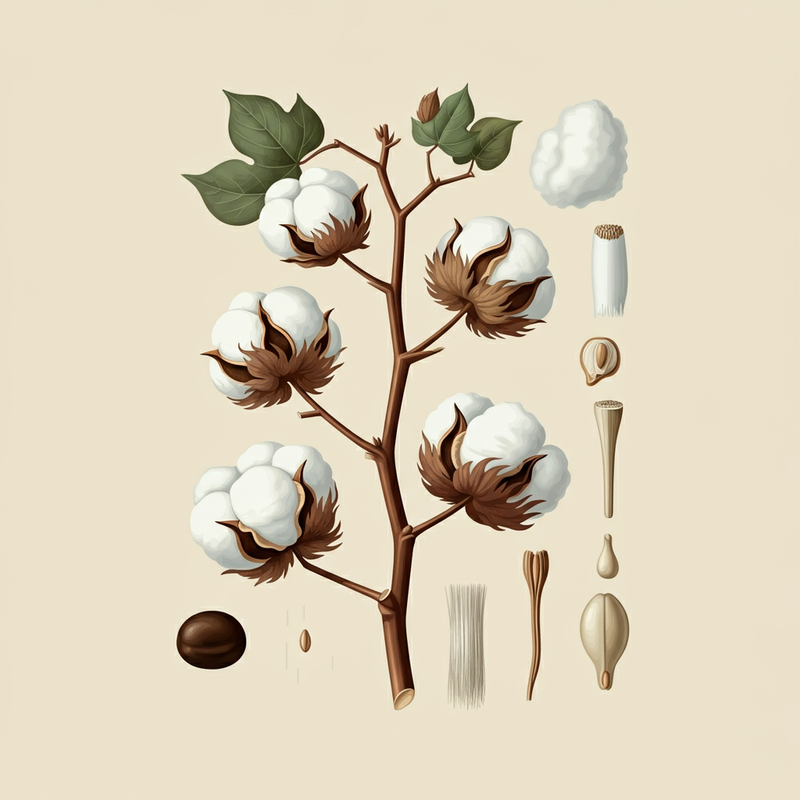
Cotton is The most extensively used fibers on earth, and its origins might be traced back again to ancient periods. Archaeologists think cotton generation started out in India about 5,000 a long time in the past when cotton crops had been cultivated for cotton fibers and woven fabrics.
This intricate composition of cellulose I and noncellulosic constituents, coupled with the special ribbon-like form and twists forming microfibrils, contributes to the general energy and versatility of cotton fibers.
The technique for weaving cotton yarn into material is analogous to that for other fibers. Cotton looms interlace the tense lengthwise yarns, termed warp, with crosswise yarns referred to as weft, or filling. Warp yarns typically are treated chemically to prevent breaking through weaving.
Pima cotton can also be used in fine shirting fabrics, the place its clean texture and large power are specially valued.
arboreum might be sequenced. Its genome is around twice that of G. raimondii. Part of the main difference in measurement is because of the amplification of retrotransposons (GORGE). After both diploid genomes are assembled, they would be used as products for sequencing the genomes of tetraploid cultivated species. Without the need of recognizing the diploid genomes, the euchromatic DNA sequences of Advertisement genomes would co-assemble, as well as their repetitive factors would assemble independently right into a and D sequences respectively. There would be no way to untangle the mess of AD sequences without having comparing them to their diploid counterparts.
Cellulose can be a polymer built up of glucose, a kind of sugar. Glucose is created while in the leaves with the cotton plant, which are stuffed with shiny eco-friendly chloroplasts.
Knowing the variations concerning these styles might help individuals and manufacturers make educated choices that meet their needs although supporting sustainability from the textile field.
Egyptian cotton, derived with the Gossypium barbadense species, is renowned for its exceptional excellent and lavish truly feel. It is primarily developed in the Nile River Valley, exactly where The check here nice and cozy local weather and fertile soil build best developing conditions.
Indigenous to South The usa and select areas in America, it’s No surprise this sought-soon after substance happens to be most well-liked for its resistance to fading, tearing, and wrinkling.
The secondary wall includes concentric layers of cellulose it's also known as the S2 layer, that constitute the main part of the cotton fiber.
The bolls of your plant contain fluffy cotton fibers, that happen to be extracted and spun into yarn for being woven with each other to produce the popular cloth we all know and love.
Today cotton can be a staple material in just numerous industries, from trend to Health care and beyond, with cotton manufacturing still expanding yearly.
Cotton fibers come from cotton crops. Precisely, they improve in the seed coat—the outer layer on the cotton plant's seeds. Before they may be changed into sheets or t-shirts, the cotton seeds need to first be divided with the plant, then the fibers with the seeds.
We've built sheets of paper from cotton linters from various pulp mills and have discovered our existing supplier to acquire the very best quality pulp. Our 225HL-M originates from that mill. It can easily be processed right into a usable pulp in the blender or a hydro-pulper, though the ensuing paper has a tendency to be softer and bulkier than when beaten in a very Hollander beater. The brief fiber of 2nd Slash linters causes it to be really helpful to choose up specifics in casting or other kinds of paper sculpture.